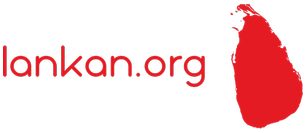Top 10 Annual Festivals in Sri Lanka You Must Experience in 2025-2026

Sri Lanka, the Pearl of the Indian Ocean, is a land vibrant with ancient traditions, spiritual devotion, and jubilant celebrations. Its annual festival calendar is a rich tapestry reflecting the island’s diverse multi-ethnic and multi-religious heritage. From grand Buddhist processions to colorful Hindu pujas and lively cultural gatherings, these events offer an unparalleled glimpse into the soul of Sri Lanka. For those planning a captivating journey, staying abreast of the latest dates and developments for 2025 and 2026 is crucial to experience the magic firsthand. Planning Your Festival Journey: Latest Insights for 2025-2026 While annual festival dates are typically set well in advance, recent updates impacting tourism and specific festival schedules are vital for discerning travelers. The nation’s commitment to cultural immersion is growing, with an emphasis on heritage revival, particularly in regions like Jaffna. Furthermore, anticipated infrastructure improvements, such as a high-speed rail connecting Colombo to Kandy in under 90 minutes, are expected to significantly enhance accessibility for major events like the Kandy Esala Perahera by 2026. Spotlight on Sri Lanka’s Unmissable Annual Celebrations 1. Kandy Esala Perahera Undoubtedly Sri Lanka’s most magnificent spectacle, the Kandy Esala Perahera is an ancient Buddhist festival honoring the Sacred Tooth Relic of Lord Buddha, housed at the Sri Dalada Maligawa. This grand procession features richly caparisoned elephants, traditional dancers, drummers, and fire performers parading through Kandy’s streets for ten nights. It is considered the epitome of the country’s Buddhist celebrations. 2. Galle Literary Festival A beacon for literary enthusiasts, the Galle Literary Festival transforms the UNESCO-listed Galle Fort into a vibrant hub of intellectual discourse and artistic expression. This internationally acclaimed event draws renowned authors, poets, and thinkers from around the globe. 3. Sinhala and Tamil New Year (Aluth Avurudda) Celebrated widely across the island, the Sinhala and Tamil New Year marks the sun’s transition from Pisces to Aries, signifying the end of the harvest season and the dawn of spring. It’s a time for family gatherings, traditional customs, delicious sweetmeats, and traditional games, observed by both Sinhala Buddhists and Tamil Hindus. 4. Vesak Poya Vesak, the most significant Buddhist festival, commemorates the birth, enlightenment, and passing of Lord Buddha. The island illuminates with colorful lanterns (Vesak koodu), pandals (thoranas) depicting Jataka tales, and ‘Dansals’ offering free food and drinks to passers-by. 5. Duruthu Perahera (Kelaniya) The Duruthu Perahera at the historic Kelaniya Raja Maha Viharaya marks the Buddha’s first visit to Sri Lanka. This early-year procession showcases traditional Kandyan dancing, drumming, and decorated elephants, albeit on a smaller scale than the Kandy Perahera, culminating in a grand final procession. 6. Nallur Festival (Nallur Kandaswamy Kovil Festival) The Nallur Kandaswamy Kovil Festival in Jaffna is one of Sri Lanka’s longest and most revered Hindu festivals, dedicated to Lord Murugan. Spanning nearly a month, it’s a profound display of devotion with vibrant chariot processions, rhythmic drumming, and acts of self-mortification by entranced devotees. 7. Deepavali (Diwali) The Festival of Lights, Deepavali, is a significant Hindu celebration observed with great zeal in Sri Lanka, particularly by the Tamil community. It symbolizes the triumph of light over darkness and good over evil, marked by lighting oil lamps, fireworks, and sharing sweet treats. 8. Kataragama Esala Perahera Held in the sacred town of Kataragama, this multi-religious festival honors God Kataragama, revered by both Buddhists and Hindus. It involves solemn rituals, firewalking, Kavadi dances, and a procession with decorated elephants carrying sacred relics. 9. Thai Pongal A harvest festival celebrated primarily by the Tamil community, Thai Pongal is a thanksgiving celebration dedicated to the Sun God (Surya) for a bountiful harvest. Families prepare a special sweet rice dish (pongal) and decorate their homes with colorful ‘kolams’ (rice paste designs). 10. Poson Poya Poson Poya holds immense religious significance as it commemorates the introduction of Buddhism to Sri Lanka by Mahinda Thero in the 3rd century BC. Devotees visit temples, engage in religious observances, and illuminate their surroundings with lanterns, particularly in Anuradhapura and Mihintale, the cradle of Buddhism in Sri Lanka. Essential Tips for Festival-Goers in Sri Lanka To maximize your festival experience, especially for events like the Kandy Esala Perahera or Nallur Festival which draw huge crowds, early planning is essential. Book your accommodation and secure viewing spots well in advance. Respect local customs and dress modestly when visiting religious sites. Be prepared for large crowds and potential traffic congestion in festival areas. Engaging with local tour operators for guided experiences can also provide deeper cultural insights and logistical ease. Stay updated with official tourism advisories and festival websites for any last-minute changes. Conclusion Sri Lanka’s annual festivals are more than just events; they are profound expressions of faith, heritage, and community spirit. Attending one of these vibrant celebrations offers an unforgettable immersion into the island’s captivating culture. With the latest 2025-2026 dates in hand, your journey to experience the heart of Sri Lanka‘s festive traditions awaits.
Sri Lanka Ends Free Distribution of Plastic Shopping Bags: A Bold Step Towards Sustainability

Sri Lanka ends free plastic bags? In a significant stride towards environmental conservation, Sri Lanka has officially ceased the free distribution of plastic shopping bags across the nation. This landmark regulation, effective November 1, 2025, marks a pivotal moment in the country’s ongoing battle against plastic pollution. The move underscores Sri Lanka’s commitment to fostering a greener future and encouraging more responsible consumption habits among its citizens. The Central Environmental Authority (CEA) announced this new directive, emphasizing its aim to curb the excessive use of single-use plastics and mitigate the pervasive environmental damage caused by disposable polythene waste. Consumers are now urged to embrace reusable shopping bags, actively participating in a national effort towards sustainable consumption. The Policy Shift: What It Means for Consumers and Businesses New Regulations in Detail The regulation, formally published in the Government Gazette on October 1, 2025, specifically targets plastic shopping bags made of low-density polyethylene (LDPE) and linear low-density polyethylene (LLDPE), particularly those with handles, often referred to as “sili-sili bags.” Under the new directive, traders are no longer permitted to provide these bags free of charge to customers. Instead, they are mandated to clearly display the price of such bags at their business premises and ensure the cost is itemized on customer bills. This initiative, driven by the Central Environmental Authority and the Consumer Affairs Authority (CAA), aims to introduce a tangible cost to plastic bag usage, thereby discouraging impulse consumption and promoting a shift towards more sustainable alternatives. Driving Sustainable Consumer Behavior The primary objective of ending the free distribution of plastic bags is to instill environmentally responsible behavior among the public. By requiring consumers to pay for plastic bags, the government hopes to foster a conscious decision-making process at the point of purchase, encouraging individuals to bring their own reusable bags. This measure is a direct appeal to citizens to contribute actively to protecting Sri Lanka’s delicate ecosystems from the persistent threat of plastic waste. A Nation’s Journey Against Plastic Pollution Historical Context of Plastic Bans This latest regulation is not an isolated effort but rather a continuation of Sri Lanka’s longstanding commitment to combating plastic pollution. The nation has progressively implemented various bans on single-use plastics over the past two decades. Key regulatory milestones include bans on polythene less than 20 microns in 2007, thin polythene bags in 2017, and a broader restriction in 2021 covering items such as sachets, inflatable toys, and cotton buds with plastic stems. More recently, in October 2023, nine additional single-use plastic items, including straws, stirrers, cups, and plates, were prohibited from manufacturing, import, sale, and use. While these previous bans demonstrated a clear policy direction, challenges related to implementation, enforcement, and consumer awareness have been noted. The current measure focuses on a direct behavioral change by removing the ‘free’ aspect, hoping to overcome some of these past hurdles. The Environmental Imperative Sri Lanka faces a significant challenge with plastic waste, generating over 1.6 million metric tonnes annually, with single-use plastics accounting for an estimated 70% of this figure. The accumulation of plastic debris not only degrades the natural beauty of the island, impacting vital tourism and fisheries industries, but also poses severe threats to terrestrial and marine ecosystems. Beaches popular with tourists, like Unawatuna and Mirissa, frequently suffer from plastic litter. The new regulation is therefore a critical step in reducing the environmental burden and safeguarding the island’s natural heritage. Broader Vision: Beyond Just Bans Holistic Waste Management Strategies Recognizing that bans alone are insufficient, Sri Lanka is also exploring comprehensive strategies, including Extended Producer Responsibility (EPR) initiatives. These programs aim to hold manufacturers and importers accountable for the entire lifecycle of their plastic products, promoting better packaging designs and take-back systems. The CEA plans to introduce laws requiring companies to collect plastic packaging after use, fostering a closed-loop system for plastic waste management. Complementary efforts include nationwide awareness campaigns, such as those by the Sri Lanka Institute of Packaging (SLIP) in collaboration with Clean Sri Lanka, to educate the public on sustainable packaging and waste management. Furthermore, the government is considering tax incentives and subsidies to encourage eco-friendly practices across various sectors. Looking Ahead: The Path to a Circular Economy The decision to end the free distribution of plastic shopping bags is a testament to Sri Lanka’s unwavering dedication to environmental protection. While this policy represents a crucial advancement, its long-term success will hinge on robust enforcement, consistent public engagement, and the continued development of sustainable alternatives. By fostering a collective responsibility among government, businesses, and citizens, Sri Lanka can accelerate its transition towards a circular economy, ensuring a cleaner, healthier environment for generations to come. This latest move is a powerful reminder that every small step contributes to a monumental change in the fight against global plastic pollution.
Pope Leo XIV May Visit Sri Lanka: Vatican Envoy Hints at Historic Tour

COLOMBO, Sri Lanka – The prospect of His Holiness Pope Leo XIV undertaking a historic visit to Sri Lanka has emerged as a significant development, following recent high-level discussions between Vatican officials and the Sri Lankan government. Archbishop Paul Richard Gallagher, the Holy See’s Secretary for Relations with States and International Organisations, indicated that the Pontiff “may consider a visit to Sri Lanka in the near future,” a statement that has resonated deeply across the island nation and within the global Catholic community. Archbishop Gallagher’s remarks came during a courtesy call on Sri Lankan President Anura Kumara Dissanayake on November 4, 2025, at the Presidential Secretariat in Colombo. The Vatican envoy’s visit itself holds considerable weight, as it commemorates the 50th anniversary of diplomatic relations between the Holy See and Sri Lanka, a milestone underscoring a half-century of enduring ties and mutual cooperation. A Golden Jubilee Celebration and Acknowledgment of Progress The core of Archbishop Gallagher’s message conveyed the admiration held by both himself and Pope Leo XIV for Sri Lanka’s demonstrable progress, particularly in fostering peace, unity, and harmony among its diverse ethnic and religious communities. This positive assessment serves as the foundation for the potential papal visit, suggesting that the Vatican views Sri Lanka’s current trajectory favorably. President Dissanayake, in welcoming Archbishop Gallagher, expressed profound appreciation for the Vatican’s longstanding support, which has extended across vital sectors such as education and humanitarian aid, notably following the devastating 2004 tsunami. He highlighted the significant benefits reaped from five decades of diplomatic engagement, emphasizing the promotion of human dignity and consistent support during times of national need. The President also took the opportunity to extend his best wishes to Pope Leo XIV, who ascended to the papacy on May 8, 2025, becoming the first American-born Pope. His election marked a new chapter for the Catholic Church, and a visit to Sri Lanka would be one of the early, significant international journeys of his pontificate, further solidifying the nation’s place on the global Catholic map. Vatican’s Reaffirmation of Support and Collaborative Future During his comprehensive visit, which extends until November 8, 2025, Archbishop Gallagher is scheduled to participate in several key events, including a conference titled ‘The See of Rome’s Perspective and Commitment to Dialogue and Peace.’ This event, along with his courtesy calls on other high-ranking Sri Lankan officials, including Premier Harini Amarasuriya and Minister of Foreign Affairs Vijitha Herath, aims to reinforce the shared commitment to peace, cooperation, and mutual understanding. Foreign Minister Vijitha Herath, following a working meeting with Archbishop Gallagher, reiterated Sri Lanka’s pride in its multifaceted engagement with the Holy See, particularly in areas of religion, education, healthcare, interfaith dialogue, and humanitarian cooperation. Minister Herath emphasized the crucial role played by the Catholic community in Sri Lanka in nation-building, social cohesion, and charitable work, acknowledging their multi-ethnic composition as a bridge in Sri Lanka-Vatican relations. The Archbishop, in turn, reaffirmed the Vatican’s unwavering support for Sri Lanka’s ongoing efforts to strengthen ethnic and religious harmony and consolidate economic stability. This reassurance comes at a critical juncture for Sri Lanka, underlining the Holy See’s commitment to the nation’s journey towards lasting peace and prosperity. Historical Context and Future Implications Sri Lanka has a rich history of welcoming papal visits, with previous pontiffs including Pope Paul VI in 1970, Pope John Paul II in 1995, and Pope Francis in 2015, all of whom left indelible marks on the hearts of the Sri Lankan people and strengthened the spiritual bonds. A potential visit by Pope Leo XIV would not only continue this cherished tradition but also symbolize a renewed hope for spiritual guidance and international recognition of Sri Lanka’s strides in reconciliation. The discussions between Archbishop Gallagher and Sri Lankan leadership signal a deepening of diplomatic ties and a mutual desire for continued collaboration on global issues, including environmental sustainability and challenges facing developing nations. Sri Lanka has also expressed its readiness to work closely with the Holy See at the United Nations and other multilateral forums. While no definitive dates or itineraries have been announced, the Vatican envoy’s statements have ignited anticipation across Sri Lanka. The potential visit of Pope Leo XIV would undoubtedly be a monumental event, further solidifying the nation’s spiritual landscape and its standing as a beacon of interfaith understanding in the Asian region. The coming months will likely see further developments as diplomatic channels continue to explore the feasibility and details of such a significant pastoral journey.
Sri Lanka’s Sporting Renaissance: A Flood of Medals at Asian Youth Games and South Asian Athletics

The spirit of Sri Lankan athletics is soaring, ignited by a remarkable series of achievements on the international stage over the past few days. Athletes representing the island nation have brought home a significant haul of medals from both the Asian Youth Games (AYG) in Bahrain and the South Asian Athletics Championships (SAAC) in India, signaling a promising future for the country’s sports landscape. Youthful Glory: Sri Lanka’s Historic Performance at Asian Youth Games 2025 The nation erupted in cheers as the Sri Lankan contingent returned home on Sunday, November 2nd, following their participation in the 3rd Asian Youth Games held in Bahrain. The young athletes delivered an impressive performance, securing a total of seven medals – one Gold, one Silver, and five Bronze – a testament to their dedication and burgeoning talent. A standout moment in Sri Lankan sports history was etched by Lahiru Achintha of St. Aloysius National School, Ratnapura, who clinched the gold medal in the fiercely contested boys’ 1,500-meter event. This victory marks Sri Lanka’s first-ever gold medal at the Asian Youth Games, a monumental achievement celebrated across the island. The jubilant team received a hero’s welcome at the Bandaranaike International Airport (BIA), where they were greeted by Minister of Sports and Youth Affairs Sunil Kumara Gamage, Deputy Minister Sugath Thilakaratne, members of the National Olympic Committee of Sri Lanka (NOCSL), proud teachers, and enthusiastic parents. Beyond Achintha’s golden feat, the Boys Medley Relay Team added a silver medal to the tally, demonstrating collective strength and coordination. Individual brilliance also shone through with Shanuka Costa of Gateway College, Colombo, securing a bronze in the boys’ 400m, and Chathura Dulanjana from Weera Parakrama Secondary School, Yatawatta, earning a bronze in the javelin throw. Nethmi Gimhani (also referred to as Sandeepa Gimhari) claimed a bronze in the girls’ 1500m final, further underscoring the depth of talent emerging from Sri Lanka’s youth ranks. Notably, Kaya Daluwatte also secured a bronze in golf, an achievement made even more remarkable by the tournament rules that prevented a single nation from sweeping all podium positions. It is particularly significant that the athletics team, comprising a lean contingent of just 21 members, was responsible for six of the seven medals. This highlights the immense potential and targeted training within Sri Lanka’s track and field programs, especially when viewed against the backdrop of a larger 100-athlete delegation competing across 12 sports. The National Olympic Committee of Sri Lanka (NOCSL) has consistently reiterated its commitment to empowering young athletes and providing them with invaluable international exposure, a strategy that is now clearly bearing fruit. Dominance in the Region: South Asian Athletics Championships 2025 While the Asian Youth Games celebrated emerging talents, Sri Lankan athletes simultaneously showcased their prowess at the 4th South Asian Senior Athletics Championships in Ranchi, India. The nation’s contingent delivered an outstanding performance, finishing second overall with a remarkable haul of 40 medals, including 16 Gold, 14 Silver, and 10 Bronze. The significant contribution of the Sri Lanka Army athletes to this success was officially recognized, with 30 of the 59 national representatives hailing from the armed forces. Lieutenant General Lasantha Rodrigo, Commander of the Army, recently felicitated these medalists, highlighting their dedication and presenting cash incentives to encourage future triumphs. Among the star performers were Shafiya Yamick, who clinched gold in both the women’s 100m and 200m events, setting a new meet record in the 200m. Chamod Yodasinghe matched her sprinting excellence, securing gold in the men’s 100m. Other notable gold medalists include Tharindu Dasun Samaraweera in high jump, Pasindu Malshan in men’s triple jump, and Madushani Herath, who not only won gold in women’s triple jump with a new meet record but also added a gold in the long jump. Further gold medals were secured by Dasuni Kaushalya (Women’s 400m Hurdles), Rumesh Tharanga (Men’s javelin throw), Dilhani Lekamge (Women’s javelin throw), Harsha Karunarathne (Men’s 800m), and Methmi Wijesuriya (Women’s 10,000m). The collective strength of the Sri Lankan team was also evident in their gold-medal-winning performance in the Men’s 4x400m relay. Looking Ahead: Sustaining the Momentum These recent successes underscore a critical juncture for Sri Lankan sports. While the athletes have demonstrated their capability on the continental and regional stages, the challenge now lies in sustaining and building upon this momentum. The 14th South Asian Games, now rescheduled for November 2025 in Pakistan, presents another significant opportunity for Sri Lanka to reaffirm its sporting prowess. Preparations are already underway, with Sri Lanka Athletics actively identifying and training a national pool of over 50 athletes for upcoming international events, including the South Asian Senior Athletic Championships and other major competitions in 2025. However, the broader ecosystem of sports governance remains crucial. Recent reports of funding suspensions to the National Olympic Committee of Sri Lanka by the International Olympic Committee (IOC) and the Olympic Council of Asia (OCA), due to allegations of corruption and governance failures, highlight areas needing urgent reform. Encouragingly, new 2025 regulations for National Sports Associations in Sri Lanka aim to enhance transparency, accountability, and integrity, signaling a concerted effort to create a more robust and ethical sporting environment. The remarkable achievements of Lahiru Achintha, Shafiya Yamick, and their fellow medalists are not just individual triumphs; they are beacons of hope and inspiration for a nation passionate about sports. With continued investment in grassroots development, athlete welfare, and sound governance, Sri Lanka is well-positioned to achieve even greater success at future South Asian and Asian Youth Games, solidifying its place as a formidable force in regional athletics.
Sri Lanka’s Tourism Sector Sees Robust Growth in October 2025, Eyes Strong Finish to the Year
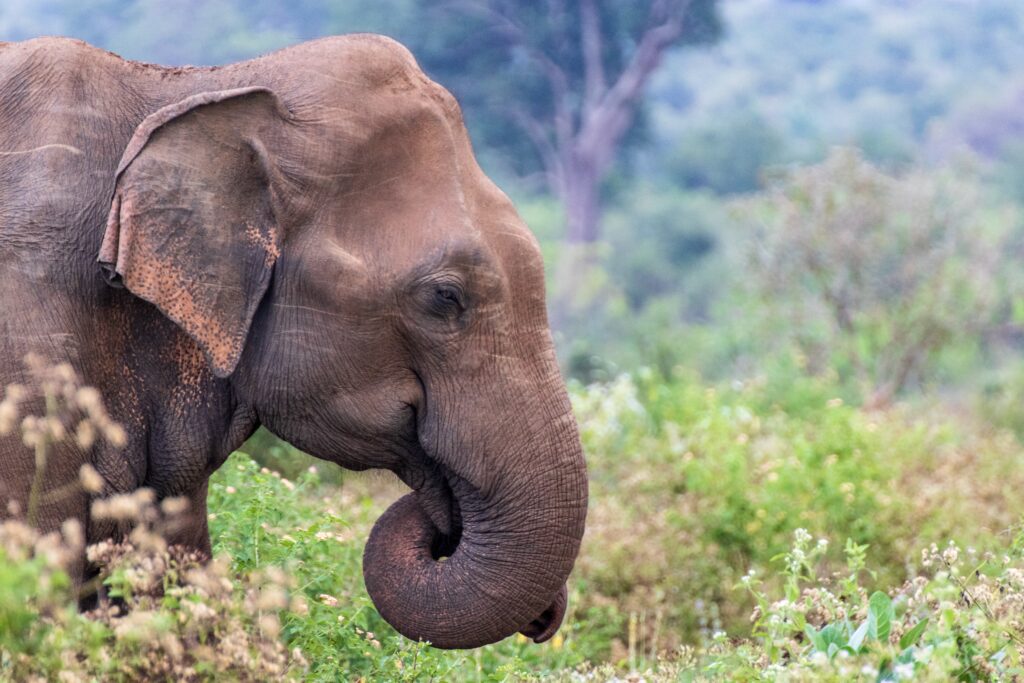
COLOMBO, Sri Lanka – As October 2025 draws to a close, Sri Lanka’s tourism sector is celebrating a significant surge in international arrivals, reinforcing its position as a burgeoning global travel destination. The latest figures released by the Sri Lanka Tourism Development Authority (SLTDA) indicate a robust year-on-year growth, signaling renewed confidence and strategic momentum within the industry. In the first 26 days of October 2025, Sri Lanka welcomed an impressive 137,876 tourists, marking a substantial 21.8 percent increase compared to the corresponding period in 2024. This positive performance has elevated the cumulative tourist arrivals for the year to date, reaching 1,863,370 by October 26, 2025, reflecting a 16.6 percent expansion over the previous year. India Leads the Charge, Diverse Markets Contribute to Growth India continues to be the primary driver of this growth, with Indian nationals accounting for the largest share of visitors in October. In the first 26 days of the month, 41,095 tourists arrived from India, representing nearly 29.8 percent of all arrivals. This dominance extends to the year-to-date figures, with India contributing 416,387 arrivals, solidifying its role as Sri Lanka’s leading source market. Beyond India, other key international markets are also making significant contributions. For October, the United Kingdom, China, the Russian Federation, and Germany emerged as prominent contributors, welcoming 11,033, 9,599, 8,507, and 7,956 tourists respectively. Cumulatively for 2025, the top five source countries are rounded out by the United Kingdom (172,926), Russian Federation (130,651), and Germany (114,944). Ambitious Targets and the Road Ahead Despite this commendable growth, the Sri Lanka Tourism Development Authority (SLTDA) acknowledges the challenges in meeting its ambitious full-year targets for 2025. The SLTDA’s projections include a ‘Lower Scenario’ of 2.415 million arrivals, a ‘Conservative Scenario’ of 2.676 million, and an ‘Optimistic Scenario’ of 3.0 million visitors. With the current year-to-date total at 1.86 million, a significant surge in arrivals during November and December will be crucial to reach even the lower end of these goals. This urgency is also reflected in the revenue targets; tourism earnings reached over $2.03 billion from January to August 2025, a 7.8% year-on-year increase, but the sector needs to generate over $2.9 billion in the final four months to achieve its $5 billion annual target. Strategic Initiatives Fueling Momentum Several strategic initiatives are contributing to the sustained momentum in Sri Lanka’s tourism sector. Enhanced air connectivity is playing a pivotal role, with new airlines and expanded flight routes boosting accessibility. Kuwait Airways is set to resume operations, while Belavia Airlines, Red Wings Airlines, Edelweiss/SWISS International Air Lines, and Enter Air are either launching or expanding their services to Sri Lanka, particularly to Bandaranaike International Airport (BIA) and Hambantota International Airport. The Airport and Aviation Services (Sri Lanka) (Private) Limited (AASL) is also introducing 12 additional check-in counters as a short-term measure for the winter season, operational from November 1, 2025, to accommodate increased demand. Furthermore, strategic visa reforms and dynamic destination marketing campaigns are enhancing Sri Lanka’s appeal. The country actively participated in prestigious international luxury travel events such as Luxperience 2025 in Sydney from October 7-10, showcasing its vibrant offerings and strengthening partnerships with global travel operators. These efforts align with the broader goal of positioning Sri Lanka as a world-class luxury destination. International Support and Future Development The global community is also recognizing and supporting Sri Lanka’s tourism recovery. The Asian Development Bank (ADB) recently approved a $100 million loan to bolster the sector, with a specific focus on developing the Dambulla and Trincomalee areas. This funding package will support crucial policy reforms and targeted infrastructure investments, aligning with the country’s National Tourism Policy. A World Bank report released this month (October) commended Sri Lanka’s stronger-than-expected growth in tourism and remittances, further underlining the sector’s positive trajectory. Adding to the positive sentiment, Lonely Planet recently named Jaffna among its ‘Best Cities to Visit in 2026’, a recognition that is expected to further boost the island’s appeal and diversify its tourism offerings. Addressing Challenges: Infrastructure and Sustainability While the growth figures are encouraging, industry stakeholders are keenly aware of the need for continuous improvement. The All-Island Association of Small and Medium Tourism Entrepreneurs has highlighted the importance of a clear and urgent plan to enhance tourism infrastructure to support the rising influx of visitors and ensure a high-quality experience. Addressing these infrastructural gaps and promoting sustainable tourism practices will be crucial for long-term growth and the realization of Sri Lanka’s ambitious targets. Outlook for Peak Season With the peak tourism season commencing in November and extending through February, the industry remains optimistic. The combination of increased air connectivity, strategic marketing, international investments, and positive global recognition sets a promising stage for Sri Lanka to capitalize on the upcoming months. The sustained growth in October serves as a strong indicator that the nation is well on its way to cementing its status as a premier travel destination, contributing significantly to its economic revival.
Ultimate Guide to Fun Activities in Colombo: Your Adventure Map

The Ultimate Guide to Thrilling Entertainment Spots and Fun Activities in Colombo, Sri Lanka Colombo, the vibrant commercial capital of Sri Lanka, is a hotspot for thrilling entertainment and leisure activities. Consequently, if you are searching for the best **Fun Activities in Colombo**, you’ve come to the right place! Indeed, the city offers a diverse range of venues guaranteed to deliver maximum fun. Therefore, we’ve compiled a definitive list of the best places to hang out, from immersive virtual reality zones to adrenaline-pumping water sports. For more travel tips, furthermore, check out our Top Colombo Guides. Top Indoor Entertainment Hubs for Fun Activities in Colombo To begin with, Colombo’s modern shopping complexes double as mega-entertainment centers, thereby housing multiple thrilling activities under one roof. **Colombo City Centre (CCC) – Gaming, Bowling, and Shooting** First and foremost, Colombo City Centre is a prime destination for high-octane fun, hosting a trifecta of popular entertainment concepts that cater to gamers and thrill-seekers alike. In short, this spot is a central hub for diverse **Colombo entertainment**. Fun Island Colombo City Center: A popular family entertainment center packed with arcade games, rides, and activities for all ages. AVR Colombo: Known for cutting-edge VR experiences and immersive gaming simulators. Counter Strike Bowling Colombo City Center: A modern bowling alley perfect for friendly competition. Shooting Arena Colombo City Center: Test your precision and aim at a state-of-the-art indoor shooting range (often air rifle or similar simulation). Address: 137 Sir James Pieris Mawatha, Colombo 00200, Sri Lanka. Google Map: View Colombo City Centre on Map **Pladium One Galle Face – Premium Indoor Gaming** Similarly, located within the upscale One Galle Face Mall, Pladium is an expansive indoor entertainment arena. Specifically, it features a wide array of arcade games, redemption games, and virtual reality rides, making it a fantastic spot for both kids and adults looking for **fun activities in Colombo**. Address: Level 4, One Galle Face Mall, Colombo, Sri Lanka. Google Map: View One Galle Face on Map **9D Cinema Marino Mall – Sensory Overload** Moreover, for a short, intense burst of fun, the 9D Cinema at Marino Mall is a must-try. Essentially, this attraction combines 3D film effects with motion, vibration, and environmental effects like wind and snow, offering a truly immersive cinematic experience. Address: Marino Mall, 590 Galle Road, Colombo 00300, Sri Lanka. Google Map: View Marino Mall on Map Outdoor & Unique Fun Activities Near Colombo **Pearl Bay Bandaragama – Waterpark and Karting Thrills** Moving away from the city center, Pearl Bay Bandaragama is a short drive from Colombo and stands as Sri Lanka’s first international standard leisure park. Above all, it’s the ideal spot for a full-day family outing, featuring a waterpark (SplashBay), an FIA-CIK certified Go-Karting track (SpeedBay), and other thrilling activities like archery and shooting. Ultimately, this is one of the best out-of-city **fun activities in Colombo**’s greater area. Address: Maithree Mawatha, Bandaragama, Sri Lanka 12530. Google Map: View Pearl Bay on Map **Soapy Island Galle Road Katubedda – Wet and Wild Fun** Furthermore, for something truly unique, head to Soapy Island for a round of soap football! This hilarious, slippery twist on soccer is played on an inflatable field covered in soap and water, which means it promises a fun, messy, and unforgettable experience perfect for groups of friends. Address: Katubedda, Moratuwa, Sri Lanka. Google Map: View Soapy Island on Map **Puttputt Mini Golf (Adventure Golf)** Finally, the timeless fun of mini golf is available in the heart of Colombo. Specifically, Puttputt (often known as Adventure Golf) offers a themed 18-hole course with challenging obstacles, thereby providing a relaxed yet competitive activity for dates or family outings. Simply put, it’s an excellent way to enjoy an afternoon of **Colombo entertainment**. Address: Arcade Independence Square, Colombo, Sri Lanka. (Using the location for Adventure Golf – a popular mini golf course in Colombo) Google Map: View Arcade Independence Square on Map In conclusion, whether you’re seeking virtual thrills, physical challenges, or hilarious water-based games, Colombo’s entertainment landscape has something for everyone. Therefore, use this guide to plan your next exciting adventure!
Sri Lanka Crowned World’s No. 1 Travel Destination for October 2025: A Deep Dive into Its Unrivalled Appeal and Recent Triumphs
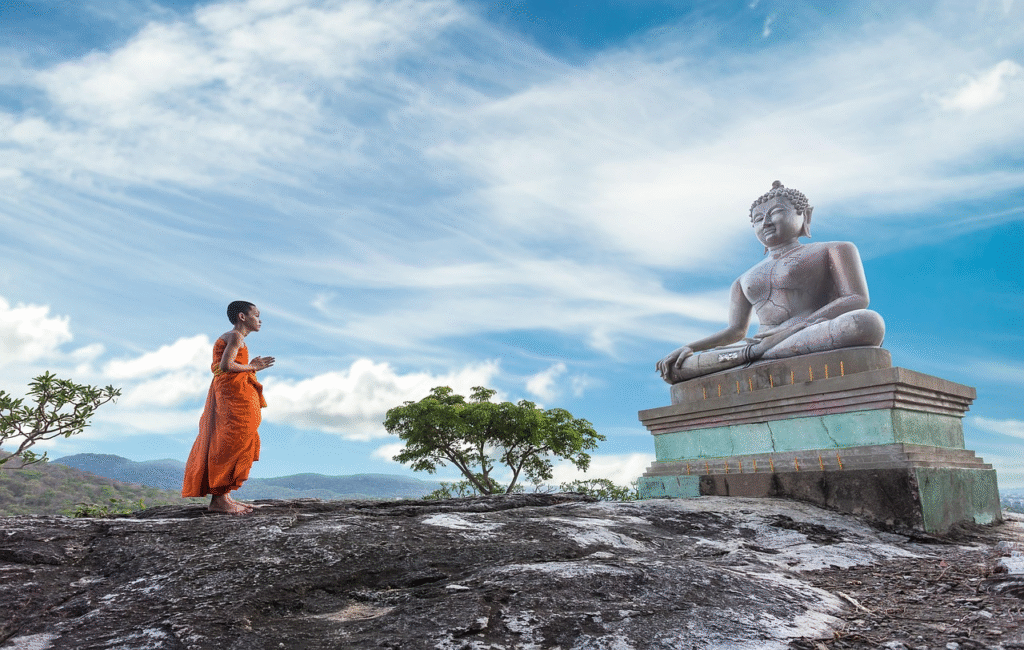
COLOMBO, Sri Lanka – October 2, 2025 – In a resounding endorsement of its growing global allure, Sri Lanka has officially been named the world’s number one travel destination for October 2025 by the esteemed global travel guide, Time Out. This prestigious accolade, announced in late September, solidifies the island nation’s position on the international tourism stage, drawing unprecedented attention just as the shoulder season begins to weave its magic across its diverse landscapes. The timing couldn’t be more perfect, with recent statistics revealing a record-breaking influx of visitors and significant industry recognition further amplifying Sri Lanka’s appeal. The announcement from Time Out highlights October as an ideal month to explore Sri Lanka, offering a harmonious blend of favorable weather conditions across much of the country, fewer crowds, and more attractive pricing for travelers. The guide lauded Sri Lanka for its unique combination of culture, adventure, and breathtaking natural beauty—a triumvirate of experiences that few other destinations can rival. Unpacking Time Out’s Endorsement: Why October is the Golden Month Time Out’s commendation for October stems from several key factors that make this month particularly advantageous for visitors. As the inter-monsoon period transitions, travelers can expect a mix of sunshine and pleasant tropical showers, creating lush, vibrant scenery without the peak-season rush. This ‘shoulder season’ allows for more authentic engagements with local culture and attractions, from the golden beaches of Mirissa and Bentota to the ancient wonders of Sigiriya Rock Fortress and the serene tea plantations of Nuwara Eliya. Beyond its iconic landmarks, Sri Lanka’s rich tapestry of experiences includes thrilling wildlife safaris in national parks like Yala and Udawalawe, where elephants, leopards, and an array of exotic animals roam freely. The scenic train journey from Kandy to Ella, winding through misty emerald hills and past cascading waterfalls, remains a bucket-list experience, celebrated for its breathtaking mountain views. A Surge in Visitor Arrivals: The Numbers Speak for Themselves The Time Out ranking arrives amidst a remarkable resurgence in Sri Lanka’s tourism sector. Just yesterday, on October 1st and 2nd, new data revealed a record-breaking September for tourist arrivals, with an impressive 158,971 visitors flocking to the island. This significant 30.2 percent increase from the previous year underscores the nation’s unstoppable growth and global attraction. The total number of tourists for 2025 has now reached a robust 1,725,494, demonstrating a strong recovery and a positive trajectory for the industry. India remains the largest source of tourists, followed by key European markets like the United Kingdom, Russia, and Germany, highlighting the broad international appeal of the island. This surge is attributed not only to the island’s inherent charm but also to strategic efforts in improving connectivity, expanding medical and wellness tourism, and ensuring a seamless visitor experience. Sri Lanka’s focus on rejuvenating its infrastructure and showcasing its diverse cultural heritage has significantly enhanced its global standing. Accolades and Achievements: Sri Lanka Shines at SATA 2025 Adding to the wave of positive news, Sri Lanka recently hosted and triumphed at the 9th South Asian Travel Awards (SATA) 2025, held in Colombo in late September. The event celebrated excellence in South Asian hospitality, travel, and aviation, where Sri Lanka secured prestigious Visitors’ Choice Awards for ‘Leading MICE (Meetings, Incentives, Conferences, and Events) Destination’ and ‘Leading Wellness Destination’. These wins are a testament to Sri Lanka’s burgeoning capacity for business tourism and its well-established reputation for holistic well-being offerings. Furthermore, local industry leaders received significant recognition, with Aitken Spence Travels winning ‘South Asia’s Best Inbound Travel Agent’ for the third consecutive year. Such awards underscore the dedication and innovation within Sri Lanka’s tourism industry, reinforcing its commitment to providing world-class experiences. The Economic Ripple Effect and Future Outlook Being named the No. 1 travel destination for October 2025 by Time Out is more than just a public relations victory; it carries clear economic implications. This international recognition is expected to boost off-peak tourism, leading to higher occupancy rates in hotels, increased activity in restaurants, and better utilization of transport infrastructure. This provides a more stable cash flow for small businesses reliant on tourism and contributes significantly to the national economy. The current momentum, fueled by both this prestigious ranking and concrete visitor numbers, positions Sri Lanka for continued success. The island nation’s ability to offer a captivating mix of sun-drenched beaches, ancient history, vibrant culture, and thrilling wildlife, coupled with a welcoming atmosphere, makes it an irresistible choice for travelers seeking both adventure and serenity. As October unfolds, Sri Lanka is poised to deliver on its promise as the world’s premier travel destination, inviting explorers to discover its timeless beauty and warm hospitality.
Sri Lanka to End Free Polythene Shopping Bags from November 1: A New Era in Plastic Management
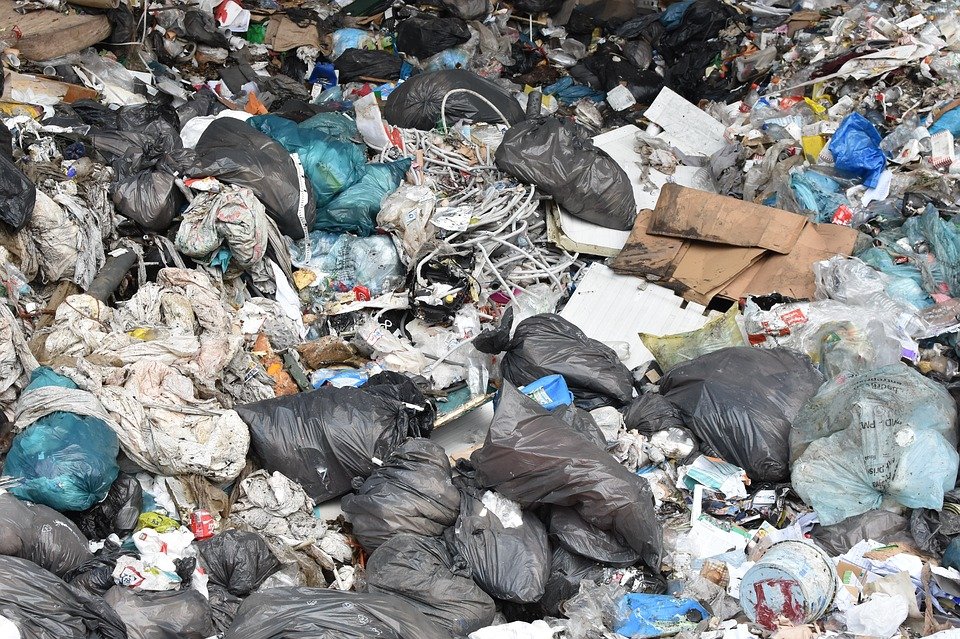
In a significant stride towards mitigating environmental degradation, Sri Lanka is poised to implement a nationwide ban on the free distribution of polythene shopping bags, effective November 1, 2025. This pivotal policy shift, confirmed by the government to the Supreme Court on Wednesday, October 1, 2025, marks a decisive escalation in the island nation’s ongoing battle against pervasive plastic pollution in Sri Lanka. The latest directive mandates that supermarkets and other retail outlets will be required to charge customers for shopping bags from the beginning of next month. This move is anticipated to fundamentally alter consumer habits and significantly reduce the sheer volume of single-use polythene bags that have long plagued Sri Lanka’s natural landscapes and urban environments. The Supreme Court’s Mandate and Environmental Advocacy The government’s commitment to this ban was presented during the hearing of a fundamental rights petition lodged by the Centre for Environmental Justice (CEJ). The CEJ had ardently argued for stronger legislative and enforcement measures to curb plastic use, highlighting the detrimental environmental impact of unchecked polythene distribution. The petitioners had previously raised concerns that authorities had failed to act on an agreement made in March 2024 to impose a levy on shopping bags. Following the government’s assurance that a gazette notification would be issued to effect the ban, the Supreme Court concluded its hearings on the case. This legal intervention underscores the critical role of environmental advocacy groups in holding authorities accountable and pushing for tangible policy changes. The transition from free bags to a mandatory charge represents a practical mechanism to internalize the environmental cost of plastic, thereby discouraging its casual use and encouraging consumers to adopt reusable alternatives. A Legacy of Bans: Sri Lanka’s Persistent Plastic Challenge Sri Lanka has a history of proactive legislative measures aimed at curbing plastic pollution, with various bans introduced over the past two decades. The journey began in January 2007 with a prohibition on polythene less than 20 microns. Subsequent years saw an expansion of these restrictions; in 2017, the scope broadened to include thin polythene bags, and by 2021, items such as sachets, inflatable toys, and plastic-stemmed cotton buds were added to the prohibited list. Most recently, October 2023 witnessed a ban on nine more single-use plastic (SUP) items, including straws, stirrers, cups, plates, and string hopper trays. Despite these commendable regulatory efforts, the effectiveness of previous bans has often been hampered by challenges in implementation and enforcement. Reports indicate that banned plastic items continue to be found in markets due to factors such as the availability of poor-quality alternatives, persistent consumer demand, and insufficient enforcement mechanisms. The Staggering Scale of Plastic Waste The urgency behind these new measures is highlighted by the alarming statistics of plastic waste generation in Sri Lanka. The nation produces over 1.6 million metric tonnes of plastic waste annually, with approximately 70% categorized as single-use plastics. A significant portion of this — an estimated 171,561 tonnes or about 69% of the country’s annual plastic waste remains unmanaged, frequently ending up in landfills, being incinerated, or leaking into vital ecosystems, including the ocean. This unmanaged waste contributes to severe environmental problems, from blocked drains that foster disease vectors like dengue mosquitoes to the degradation of pristine beaches crucial for the tourism industry. Towards a Circular Economy: Beyond Bans Recognizing that bans alone are insufficient, Sri Lanka is also exploring broader strategies to tackle plastic pollution. The country is actively pursuing Extended Producer Responsibility (EPR) initiatives, which aim to hold manufacturers and importers accountable for the entire lifecycle of their plastic products, thereby promoting better design and take-back systems. The Central Environmental Authority (CEA) has announced plans for new laws requiring companies to collect plastic packaging after use, fostering a closed-loop waste management system. The “National Action Plan on Plastic Waste Management 2021–2030” outlines ambitious goals, including an 80% reduction in problematic single-use plastics and an 80% collection and recycling rate of all plastic waste by 2025. Furthermore, global partnerships are contributing to local efforts. In April 2025, the United Nations Development Programme (UNDP) and The Coca-Cola Foundation launched a $1.1 million project to establish a comprehensive plastic waste management framework in seven local authorities within the Colombo District. Awareness campaigns also form a crucial pillar of the strategy. World Environment Day 2025, observed on June 5, saw Sri Lanka launch a “National Environment Week” under the theme “Let’s End Pollution Caused by Plastic,” promoting the “5Rs” (Rethink, Refuse, Reduce, Reuse, and Recycle) among the public. The Road Ahead: Enforcement and Public Participation While the impending ban on free polythene shopping bags from November 1, 2025, marks a critical and timely intervention, its success will heavily depend on robust enforcement and widespread public cooperation. The Ministry of Environment had previously proposed a levy or surcharge on disposable bags in August 2025, recognizing that a floor price alone was insufficient and that charging for bags had proven successful in other nations. The challenge for Sri Lanka now lies in translating policy into consistent practice, overcoming the hurdles of illegal imports and production, and fostering a societal shift towards truly sustainable consumption. This latest measure is not just about banning an item; it’s about reshaping a mindset and demonstrating a stronger national commitment to environmental stewardship. As Sri Lanka steps into this new phase of plastic regulation, the collective effort of the government, businesses, and citizens will be paramount in achieving a cleaner, greener future.
Google Unlocks Advanced AI for Sri Lankan Students: A Digital Transformation Game-Changer

Colombo, Sri Lanka – In a groundbreaking announcement that promises to redefine the landscape of digital education in Sri Lanka, Google has committed to providing free access to its advanced Artificial Intelligence (AI) tools, including the powerful Gemini platform, for students across the island. Revealed just yesterday, on September 29, 2025, at the inaugural National AI Expo and Conference 2025 in Colombo, this initiative marks a monumental leap forward for Sri Lanka’s technological future. Historic Partnership to Democratise AI Access The landmark partnership was unveiled by Eng. Eranga Weeraratne, the Deputy Minister of Digital Economy, who hailed it as a “game-changer” for the nation. After months of dedicated collaboration between the Ministry of Digital Economy and Google, the agreement ensures that every Sri Lankan student will soon gain free access to world-class AI tools, cloud computing platforms, and digital learning resources. This unprecedented move is designed to level the playing field, putting Sri Lankan students on par with their global counterparts and fostering a generation ready to thrive in the AI-driven world. Empowering the Next Generation with Gemini Advanced Central to this initiative is the free provision of Google’s advanced AI platform, Gemini, which includes its premium features and other student benefits. While the specific rollout details are expected from mid-October, this encompasses tools like Gemini Advanced (or Gemini 2.5 Pro), a versatile AI assistant capable of aiding with complex assignments, research, and creative tasks. Students can expect functionalities such as enhanced research capabilities, personalized study guides, and assistance in writing and brainstorming. The broader Google AI Pro plan, which appears to align with this offer, typically includes expanded access to Gemini 2.5 Pro for unlimited chats and image uploads, Deep Research for comprehensive reports, NotebookLM as a thinking companion, and a generous 2 TB of cloud storage for academic projects and personal files. These resources are poised to dramatically enhance learning, problem-solving, and innovation across various disciplines. Beyond Usage: The Call for Mastery and Ethical Responsibility Deputy Minister Weeraratne emphasized that the goal extends far beyond merely using AI; it is about nurturing mastery among the next generation. “We don’t just need to use AI. We want every single one of you to master it,” he stated to a packed audience. He also underscored the critical importance of ethical responsibility that accompanies such powerful access, urging students to wield these tools wisely, ethically, and for the greater good of Sri Lanka and the world. This ethical framework is crucial as students delve into sophisticated AI capabilities, ensuring they understand the implications and apply these technologies constructively for building, innovating, and solving contemporary challenges. Catalysing Sri Lanka’s Digital Economy and AI-Ready Workforce This initiative is a cornerstone of the Sri Lankan government’s broader vision to accelerate the creation of a smarter, more prosperous, and inclusive digital economy. By integrating AI and data literacy into the national curriculum and launching upskilling programs, the nation aims to build a truly AI-ready workforce. The Deputy Minister further outlined Sri Lanka’s comprehensive AI strategy, which rests on four pillars: building an AI-ready workforce, nurturing startups with incubators and state-backed funding, ensuring inclusivity for all citizens, and safeguarding digital trust through robust cybersecurity frameworks. Complementing this, the announcement also included plans for a national AI Fund of Funds, set to launch in January 2026, aimed at fostering startups, innovation, and local research. Furthermore, the establishment of a sophisticated National Cyber Security Operations Centre, designed to leverage AI for enhanced defenses, highlights the government’s commitment to securing the digital landscape. A Vision for a Smarter Future Positioning AI as the “new electricity,” Weeraratne articulated how it could transform vital sectors such as healthcare, farming, tourism, and education in Sri Lanka. Imagining doctors in rural clinics gaining instant AI-driven second opinions, farmers receiving predictive data, and tourists experiencing personalized services through AI recommendations, he painted a vivid picture of a future empowered by artificial intelligence. The free access to Google AI tools for Sri Lankan students is more than just a technological handout; it is an investment in human capital and a testament to the nation’s commitment to embracing the digital revolution. This strategic move is expected to significantly boost Sri Lanka’s national capacity in AI development and digital literacy, empowering the next generation to innovate, solve complex challenges, and compete effectively on a global scale.
Oldest Living Man in Sri Lanka: The Recognition of Bolland Hakuru Meniyel
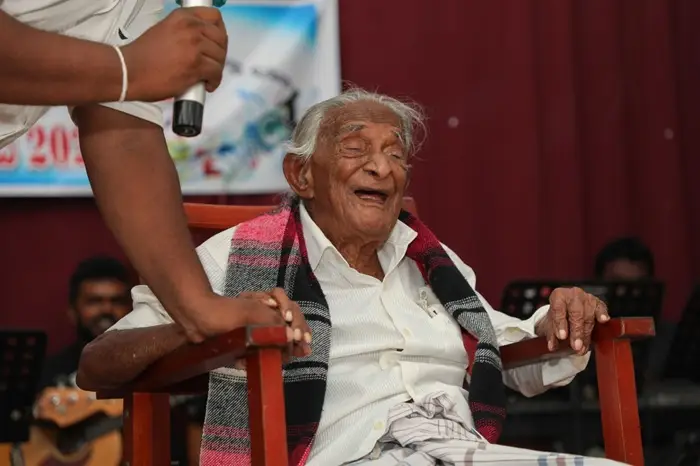
In a heartwarming and significant development for the island nation, Sri Lanka has officially recognized Bolland Hakuru Meniyel as its oldest living man (The oldest living man in Sri Lanka). The momentous announcement, coming from the National Secretariat for Elders, confirms Meniyel, a venerable resident of Karandeniya in the Galle District, to be an astounding 110 years old. This long-awaited recognition brings to light a life rich in history, resilience, and the simple virtues often attributed to exceptional longevity. The news, breaking over the last 24-48 hours, has resonated across Sri Lanka, turning the spotlight on a national treasure. A Century of Life: The Remarkable Journey of Bolland Hakuru Meniyel, The Oldest Living Man in Sri Lanka Born on June 4, 1915, Bolland Hakuru Meniyel’s life spans over a century of profound changes in Sri Lanka and the world. His old national identity card served as the pivotal document in verifying his advanced age, leading to this official declaration. Meniyel, a dedicated farmer by profession, has spent his entire life immersed in the agricultural traditions of his homeland, particularly focusing on cinnamon cultivation and contributing actively to his village community. This deep connection to the land and a life of industrious labor are often cited by his family and local residents as key contributors to his remarkable health and enduring spirit. Despite his extraordinary age, Meniyel continues to exhibit impressive faculties. Reports indicate that he remains in good health, possessing the ability to read and write, having received education up to Grade 5. His family fondly attributes his prolonged and healthy existence to a regimen of simple living and a diet notably free of toxins. Beyond his agricultural pursuits, Meniyel was renowned locally for his devout participation in religious activities, attending village pirith ceremonies steadfastly until he reached the age of 75. He is a proud father of nine children, and today, he continues to be surrounded by and enjoy the immense affection of his extensive family, including numerous grandchildren and great-grandchildren. Official Acknowledgment and Community Pride The formal recognition of Bolland Hakuru Meniyel by the National Secretariat for Elders underscores the nation’s respect for its elderly population and the historical significance embodied by centenarians. As part of this recognition, the Galle District Secretary, W.A. Dharmasiri, recently made a special visit to Meniyel’s residence. During this visit, gifts were presented, and inquiries were made regarding his well-being, symbolizing the official and community-wide acknowledgment of his status. Such gestures not only honor the individual but also highlight the cultural value placed on wisdom and longevity within Sri Lankan society. Meniyel is also a recipient of the government’s Centenarian Allowance, further demonstrating institutional support for the nation’s longest-living citizens. His recognition extends beyond a mere title; it cements his place as a proud symbol of Galle’s rich heritage, a living testament to over a century of memories and traditions that he carries. The community of Karandeniya, and indeed the entire Galle District, expresses immense pride in their oldest resident, whose life story serves as an inspiration and a source of collective identity. His enduring presence bridges generations, offering a tangible link to the past and lessons in resilience for the future. Insights into Longevity: Sri Lanka’s Centenarian Landscape While Bolland Hakuru Meniyel’s recent recognition is a singular event, Sri Lanka, like many nations, is grappling with an increasingly aging population. Studies indicate a significant demographic shift, with projections suggesting that by 2041, nearly one in four Sri Lankans will be aged 60 or above. This demographic trend, considered one of the fastest aging populations globally, highlights the importance of understanding factors contributing to exceptional longevity. In 2017, a study by the National Secretariat for Elders revealed that there were 258 individuals over 100 years old living in Sri Lanka, though this figure is now several years old. Globally, the number of centenarians has been steadily increasing, quadrupling between 2000 and 2020. Meniyel’s reported lifestyle—rooted in agriculture, a toxin-free diet, and active community and religious engagement—aligns with many anecdotal and some scientific observations about centenarians worldwide. The emphasis on a simple life, close family ties, and sustained physical activity often appears in the narratives of those who live to such advanced ages. His story provides valuable, real-world insight into what fosters long-term well-being and a fulfilling life in the Sri Lankan context. Celebrating a National Treasure and Inspiring Future Generations The official recognition of Bolland Hakuru Meniyel is more than just an administrative formality; it is a celebration of life, heritage, and the enduring human spirit. It serves as a powerful narrative, inspiring younger generations to appreciate the wisdom of their elders and to consider the elements that contribute to a long, healthy, and meaningful existence. In a world increasingly focused on the future, figures like Meniyel remind us of the invaluable connection to our past and the strength found in traditional ways of life. His story, now brought to national attention, will undoubtedly become a source of national pride and an emblem of Sri Lankan resilience. As the nation continues to evolve, the recognition of individuals like Bolland Hakuru Meniyel ensures that the legacies of those who have lived through so much are not only acknowledged but cherished, offering lessons and inspiration for generations to come.
